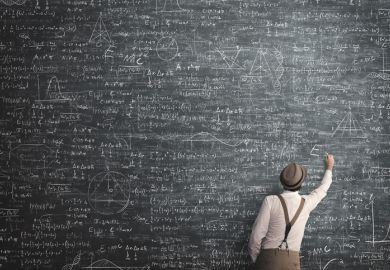Curved Spaces: From Classical Geometries to Elementary Differential Geometry
Author: P.M.H. Wilson
Edition: First
Publisher: Cambridge University Press
Pages: 196
Price: £60.00 and £24.99
ISBN 9780521886291 and 713900
Curved Spaces aims to introduce second-year undergraduates to classical geometry before leading them through the general theory of curved spaces to Riemannian metrics and the Gauss-Bonnet theorem. It bridges the gap between introductory first-year courses in algebra, multivariate calculus, complex analysis and those in the third or final year on Riemann surfaces, differential manifolds, algebraic topology and Riemannian geometry.
As Pelham Wilson points out, geometry tends to be neglected at undergraduate level. Despite delivering a broader syllabus of topics than is normally found at undergraduate level today, my own mathematics and physics degree did not provide for such a course. I learnt my post-school geometry in a crowded introduction to the final-year general relativity course from texts far less clear than this one. If my alma mater had provided such a geometry course, Curved Spaces would have been one of the books I would have wished for as the recommended text.
The text begins with the classical two-dimensional geometries: Euclidean and spherical. It assumes little prior knowledge beyond simple vectors, matrices, complex numbers and a basic general idea of groups, introducing spherical triangles and Mobius geometries along the way. The third chapter discusses tori, triangulations and Euler numbers. It contains the only major proof that is not self-contained, which is placed in an appendix on polygonal approximations so first-time readers can skip it if they choose.
The next chapter deals with Riemannian metrics on open subsets of the reals, lengths of curves and areas of surfaces. Hyperbolic geometry follows, including the Gauss-Bonnet theorem for hyperbolic triangles and the hyperboloid model. Having then dealt with the classical geometries, smooth surfaces embedded in 3-space are covered, including Gaussian curvature, surfaces of revolution, first and second fundamental forms. A separate chapter covers geodesics where calculus of variations is introduced in an effortless way, thus opening up the possibility of ample technical examination questions. The final chapter covers abstract surfaces and the Gauss-Bonnet theorem for geodesic triangles and general closed surfaces, finishing with the geometry of plumbing joints and building blocks.
The readable text is presented logically with appropriate degrees of rigour for novices. It is liberally illustrated with well-chosen line diagrams. Each chapter includes a set of exercises.
The book would certainly serve as a text for students interested in pursuing pure mathematical options as well as for the advanced mathematical physicist. It could also serve as a companion text to a course on relativity, for students requiring a firmer foundation.
Who is it for? Second- and third-year undergraduate mathematicians or advanced mathematical physicists.
Presentation: Cleanly and clearly laid out with well-chosen diagrams, developed in a logical order.
Would you recommend it? Highly.
Register to continue
Why register?
- Registration is free and only takes a moment
- Once registered, you can read 3 articles a month
- Sign up for our newsletter
Subscribe
Or subscribe for unlimited access to:
- Unlimited access to news, views, insights & reviews
- Digital editions
- Digital access to THE’s university and college rankings analysis
Already registered or a current subscriber? Login


